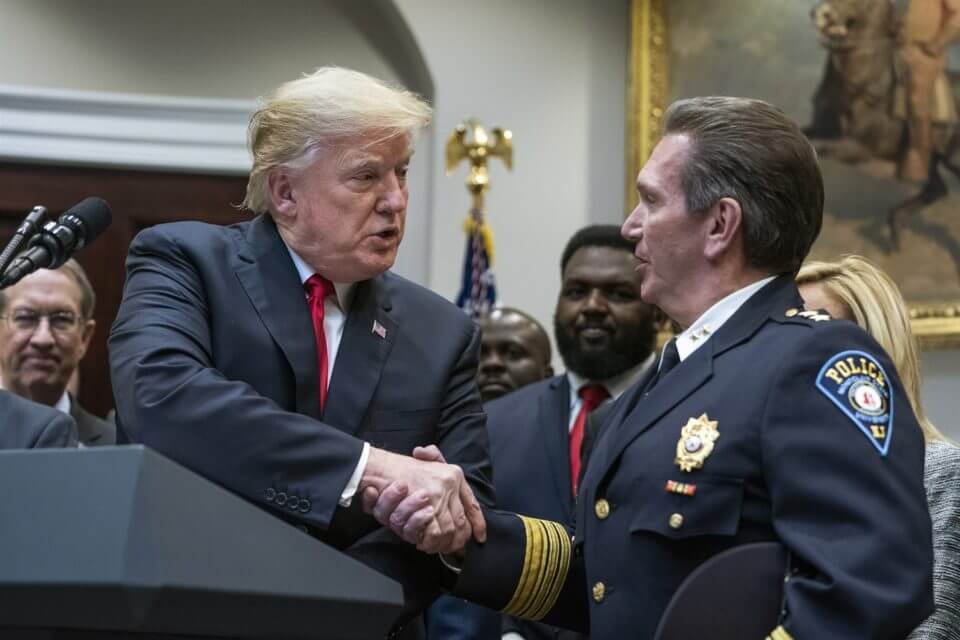
“Communities do not have ‘gang problems.’ America has a gang crisis.”
No one can credibly endorse sweeping criminal justice “reforms” without seriously factoring gangs into the equation. As such, the debate over the First Step Act provides an opportunity to make an evaluation. Did proponents address criminal street gangs? Where so, the advocates could be considered informed. If not, their takes are suspect.
Cobb County Georgia District Attorney Vic Reynolds and his chief gang prosecutor, Mike Carlson admonish, “Communities do not have ‘gang problems.’ America has a gang crisis.” Widely available evidence validates their conclusion. For instance:
- Georgia Attorney General Chris Carr has accurately explained, “In America, nearly half of all violent crimes are gang-related.”
- Columnist Phil Kent recently identified that federal studies estimated gang membership in the United States at 1.4 million members, representing more than 33,000 gangs nearly a decade ago.
- Another federal report determined that gangs are the primary retail-level distributors of most illegal narcotics.
- In 2018, the Georgia Gang Investigators Association’s study established that there are over 70,000 gang members and associates in the Peach State alone.
- United States Attorney for the Southern District of Georgia, Bobby Christine remarked that in 2018 the number of gang members in Georgia likely exceeded the membership for ISIS at its height.
Penitentiaries are incubators for gang activity, development, and recruitment. The First Step Act, by design, will shorten prison sentences for federal inmates, releasing convicted felons back into society at an accelerated rate. Anyone who thinks that the likes of MS-13, Bloods, and Ghost Face Gangsters, to name a few, will not attempt to take advantage of the First Step Act is simply uninformed, uninterested, or in denial.
Yet and still, First Step Act enthusiasts maintain that it was drafted with public safety in mind. At the same time, they routinely fail to point to any impactful anti-gang measure within its text. They likewise do not reveal what, if any national, regional, or state gang investigators association was consulted as the First Step Act was developed and pushed.
Additionally, First Step Act proponents do not appear to factor in the detailed gang research of Dr. Mike K. Carlie, Ph.D., who concluded, “[T]he potential impact of gang members paroled or released from prison was explored. Research has shown that their impact is basically negative – leading to more, not less, gang activity.” Reports on other academic research showing that youth gang membership might actually triple federal estimates are also not referenced by First Step Act advocates.
Tellingly, pro-First Step Act pundits consistently fail to even mention the word “gang” in their columns.
Adherents of the First Step Act may point to its passing references to gangs as sufficient. The First Step Act indeed protects against the release of gang members sentenced under the gang punishment enhancer located at 18 USCS § 521. The overwhelming majority of gang members, of course, never see that statute leveled against them. They would seemingly remain otherwise eligible for release. A validated gang member serving time for a gang-motivated crime should be automatically ineligible. Confirmed gang membership is not even a part of the “risk and needs assessment” tool designated in the First Step Act.
Plus, the federal gang sentence enhancer has been widely decried by legal experts as ineffectual. Fuller E. Callaway Chair of Law Emeritus Ronald L. Carlson of the University of the Georgia School of Law clarifies: “The federal [gang sentence enhancement] statute was described by one federal prosecutor as ‘unworkable.’ Perhaps this explains the hesitant application of its provisions. Comprehensive anti-gang frameworks, like Georgia’s model, are far more impactful against the gang epidemic.”
The First Step Act also provides for reports on how its potential savings might be used for, among other options, “[T]o increase investment in law enforcement and crime prevention to combat gangs of national significance.” On this topic, Dr. Carlie’s research also concluded that aggressive law enforcement and prosecution of gang members is a key component of effective gang-prevention:
“Criminally active gang members who are free in the community are also free to recruit, threaten and otherwise cajole others to join them in their criminality. Unless they removed, prevention and intervention efforts may be only marginally effective.”
As it has made its way through the process, opponents of the First Step Act raised serious and important concerns. Examples include:
- Former federal prosecutor Thomas A. Ascik identified: (1) a host of serious crimes which remain eligible for sentence reduction; and (2) serious policy misgivings under the First Step Act.
- Council Nedd II of Project 21 observed: “Quite simply, longer sentences keep offenders off the street longer. While they’re off the street, they can’t commit crimes.”
- United States Commission on Civil Rights member Peter Kirsanow opined: “[S]tatistics indicate that FIRST STEP sentence reductions will come with a cost: an increase in crime—and, accordingly, an increase in the number of victims”
These conclusions, though poignant, were apparently reached without specific consideration of gangs or gang crime. The determinations would be strengthened if the impact of gangs and gang crime had been included. That additional delineation would definitely buttress the analysis of the foregoing authors.
Clearly, America’s criminal justice system is in need of reforms. The same can be said about the systems in our states. Ignoring America’s Gang Crisis in the name of reform, however, does not benefit public safety.
James “Jimmy” Callaway serves as the President of the Georgia Gang Investigators Association and is the Chief of Police for the City of Morrow, Police Department in Metro Atlanta, Georgia. Mr. Callaway has authored this column in his personal capacity. The views expressed above are the Author’s own and do not necessarily express those of the Georgia Gang Investigators Association or the City of Morrow.











